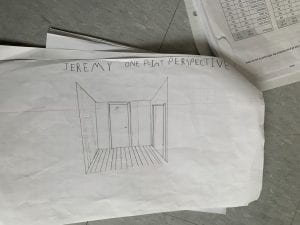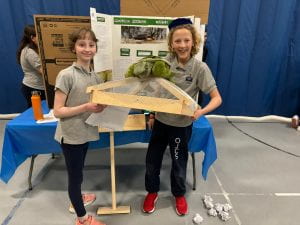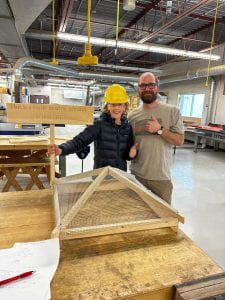על שיעורי הבית שלי קראתי את החדשות. למדתי
פלסטינים ברצועת עזה דיווחו כי 16 בני אדם נהרגו אמש בגל פיגועים באזורים שונים ברצועת עזה, כולל בעזה ובחאן יונס.
שעורי בית
לשעורי בית אני למדתי שטראמפ מתכוון לדבר עם עיראק על נשק גרעיני ועל משא ומתן.
שעורי בית
לשעורי בית קראתי את החדשות למדתי שאלוף פיקוד הדרום התפטר, האלוף ירון פינקלמן, מקונן: “הכישלון בוער בי לשארית חיי”. מחליפו, מייג’ור גנרל יניב אשור, ציין את המשימות “שיוצרות בו זמנית את המצפן לניצחון”.
Mon projet sur la mode des années 1920
A la fin d’une unité de travail sur la mode et les jeunes, Madame Sylvie nous a demandé de faire un projet. Il fallait que je choisisse une période historique et que je recherche le style de vêtements, coiffures, mœurs etc pour hommes et femmes de cette époque. J’ai choisi de rechercher les années 1920.
Par la suite, il fallait, bien entendu, préparer le résultat de notre recherche sur CANVA en suivant une rubrique spécifique avant de présenter oralement à notre classe. Le jour de ma présentation, j’ai impressionné toute la classe en m’habillant avec des vêtements de l’époque que j’ai choisi.
Ci-dessous, vous trouverez mon projet sur la mode.
1920s by jeremy.toubiana
Herzl Project
Mr. Washerstein gave us a task to create journal entries and problems to solve and research general topics and ideas. We also made a reflection paragraph to represent our conclusions. It also overviews our main issues.
This is a project about Theodore Herzl. In this project, we did the following: we solved real-life issues that Herzl faced. One that includes family issues, antisemitism, and issues to do with the state of Israel. As well as to make the Zionist dream a reality. We created journal entries on these three problems.
Design by jeremy.toubiana
The Struggles of Theodor Herzl: A Personal Journey by jeremy.toubiana
Bloomfield Ranch
https://sites.google.com/theojcs.ca/bloomfieldranchnowhiring/home
This is our website link.
Jeremys Smart goals
I want to improve my initiative by improving my work habits in class.I can do this by using headphones, starting my work immediatly. This goal will also reduce my stress because I can work faster and more efficiently. This goal is realistic because I sometimes get distracted at school. My teachers and my parents could support me in this effort.
I want to achieve better grades in math. The milestones achieved will be my improved grades on my report card. Last year my grade was in the 80s but I want to improve it by getting my grade above 95% by the end of the year and I would like to get 90% by the January report card. This goal is worthwhile because being good at math will help me in life. This goal will support my overall growth because math is an essential subject for life. To achieve this goal, I will complete all my homework and the unit reviews. Mr Ray will help me achive this goal by doing homework checks
Memory Book
This is my memory project that we made in English class:
Jeremy’s Tiny House Blog Post
For our project we researched tiny houses and how they can be more sustainable than normal houses. Tiny houses are houses that are much smaller than regular houses; they are both cost efficient and environmentally friendly. They have been getting more popular in the last several years. Tiny houses are becoming more popular because they are more affordable and they can help reduce people’s carbon footprint. In addition another positive thing about tiny homes are that you can put your home in way more places, and do not need a large piece of land. However, a downside is they cannot accommodate big families, and you do not have a lot of space to keep and store many things.
Despite these negatives tiny homes are very sustainable. Tiny houses contribute less greenhouse gasses to the environment. Tiny houses help lower our carbon footprint because they are smaller which means that they take less resources to build, they use less electricity to run, and they do not have to be hooked up to the grid. They could, for example, work completely off solar power.
This is important because greenhouse gasses are gasses that are very bad for the planet. They warm up the earth and do not let the hot air out. They are what create a carbon footprint. A carbon footprint is the way that people measure the amount of greenhouse gasses you emit. To calculate a carbon footprint you have to add up all the emissions that you have contributed through your daily lifestyle. For example add up your electrical, gas, and oil bills and add in the mileage on cars and planes. For a good calculator use this link https://www.carbonfootprint.com/calculator.aspx.
In this project we got to design our own tiny house. In my design I used sustainable materials. My tiny house used slate for the roofing and wood for the flooring. My resources promote sustainable living by being very durable while also being very beautiful. While slate does need to be mined, it rarely has to be replaced. I chose wood for my flooring because it does not emit chemicals and it is less wasteful then carpets. The reason for this is that when carpets break they are thrown away. The flooring can be reused as reclaimed wood. My goal for all other furniture was to use reclaimed or recycled materials whenever possible.
During this project I was surprised many times after I researched about sustainable vs non sustainable resources. Some questionable things were that the prices for renting vs owning a house are not that different. All of this work really led me to ask how I could be more environmentally friendly and reduce my own carbon footprint. I also wondered how it would be possible for large families who could not live in a tiny house, what can they do?
Now when I think about the project I am most proud that I learned so much about sustainability in homes and feel that I can make more environmentally friendly decisions. This makes me feel more confident that I can help save the one and only earth that we live on. Some changes I would like to make if I was the one who assigned this project is that I would make the reading sections a little more accessible. I would also have liked to build one of these homes, even if virtually, as they would have helped bring it all together for me. I did encounter a few struggles during this assignment (like doing a 1 point perspective) but I tried to ask questions and get more help. All in all this project was a great opportunity for me to learn more about our environment and how to protect it.
Here are the pictures of the math section from this project.



innovation day project reflection
This year during innovation day we had to make a virtual reality world about an animal that was facing a problem and design a structure that would help them. When we finished we had to present a “pitch” to three different judges which would then determine who gets first, second, and third. My partner was Ariel and we designed a nesting ground and a nest protector for the midland painted turtle. They face loss of nesting habitat and predation of the eggs. We think we have helped address this problem.
Here is a picture of Ariel and my project on Innovation day.

After innovation day Mr. Ray made us write this, a reflection. In this reflection I will explain what I thought I did well in this project. Before I started this project I was very nervous about it. I did not know what to do and how to do it. Looking back, I wished I read through all the explanations and did the research more effectively. Even though I started off on the wrong foot I think that we did the rest of our project very well. I am proud of how it came out in the end. Moving forward from this project I will be sure to work hard from the start and not stop till I am done. I think that some things that made my project glow was the nest protector that I built for my project and the sign that I carved. During this project I learned some valuable skills, some of them are; not saving everything for the last minute and research always comes first. All in all I think that this project has helped me learn how important it is to work hard and not get distracted.
Here is a picture of me building the nest protector.

Innovation day is my favorite project of the whole year at OJCS. I learned alot and perhaps best of all we got second place!